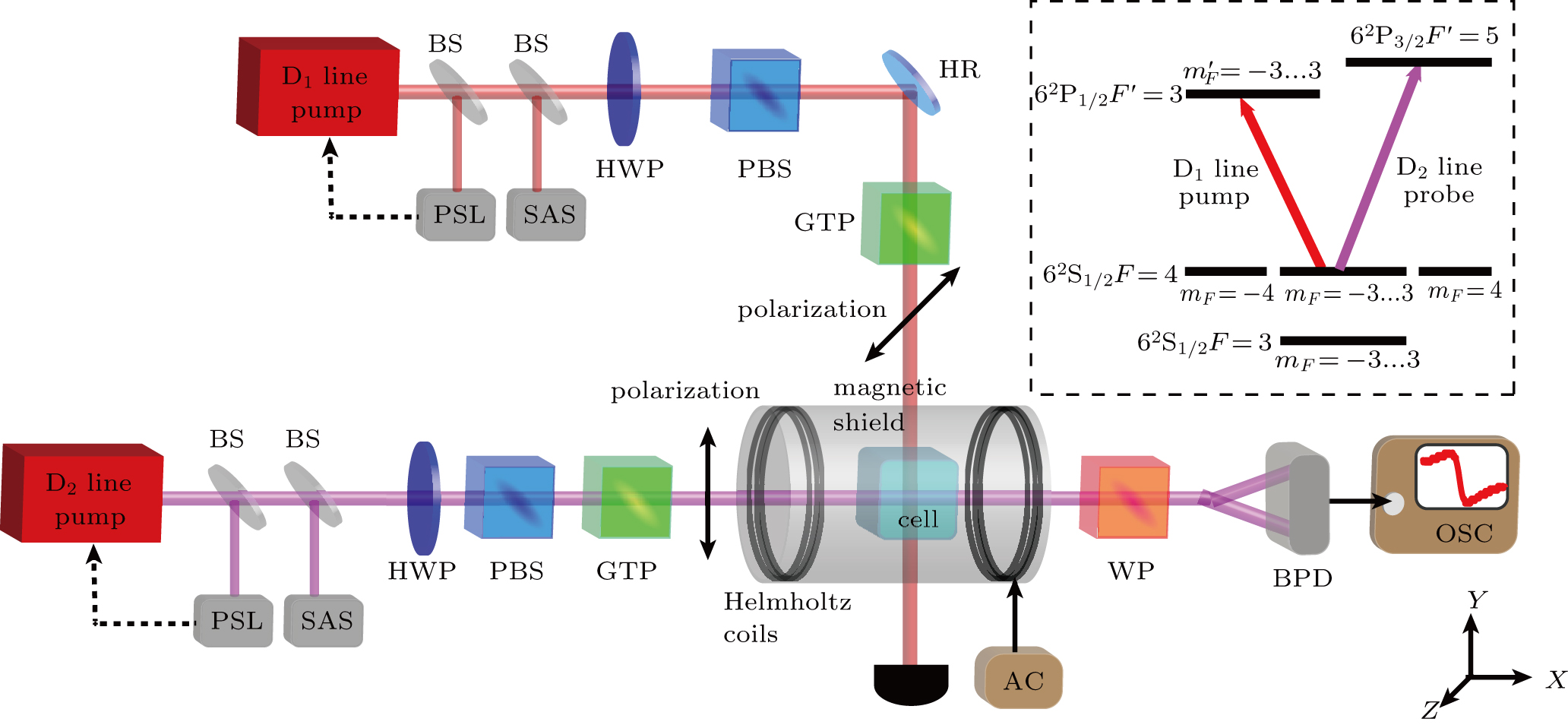Influence of pump intensity on atomic spin relaxation in a vapor cell
supported by the National Key R&D Program of China (Grant No. 2017YFA0304502) and the National Natural Science Foundation of China (Grant Nos. 11634008, 11674203, 11574187, and 61227902).
Experimental setup for measuring the MRL. BS: beam splitter; PSL: the laser frequency control system by polarization spectrum locking technique; SAS, saturated absorption spectrum; HWP, half-wave plate; PBS, polarization beam splitter; HR, highly reflective mirror; GTP, Glan–Taylor prism; WP, Wollaston prism; BPD, balanced photodetector; AC, alternating current power supply; OSC, oscilloscope. The involved energy levels of cesium atom are shown in the upper right. mF and
